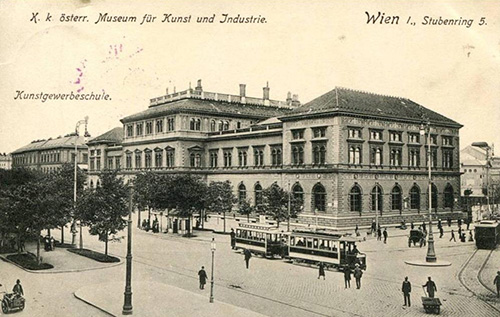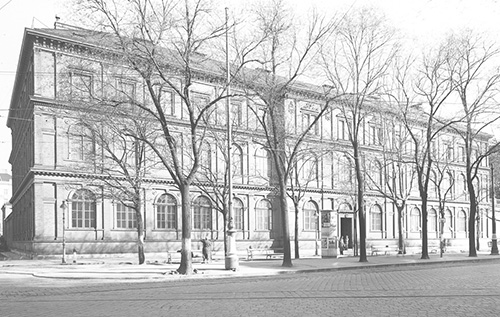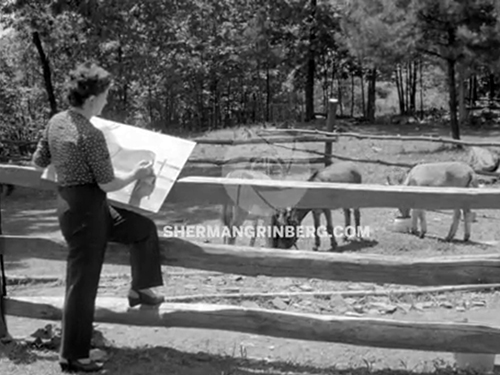- Vienna's Arts and Crafts School in the 1920's Archived Message
- Marianne Ostier as a designer - Beth August 3, 2018, 8:17 am
- Re: Marianne Ostier as a designer - mauriz August 3, 2018, 5:11 pm
- Re: Marianne Ostier as a designer - Beth August 4, 2018, 7:09 am
- Re: Marianne Ostier as a designer - Beth August 4, 2018, 7:09 am
- Model displays diamond water lily pin designed by Marianne Ostier - mauriz August 3, 2018, 5:40 pm
- Marianne Ostier drawing a sketch - mauriz August 3, 2018, 5:58 pm
- Re: Marianne Ostier drawing a sketch - Beth August 4, 2018, 7:17 am
- Re: Marianne Ostier drawing a sketch - Dave August 4, 2018, 9:49 am
- Re: Marianne Ostier drawing a sketch - Dave August 4, 2018, 9:49 am
- Re: Marianne Ostier drawing a sketch - Beth August 4, 2018, 7:17 am
- Vienna's Arts and Crafts School in the 1920's - mauriz August 6, 2018, 3:57 am
- Re: Vienna's Arts and Crafts School in the 1920's - Beth August 6, 2018, 11:32 am
- Re: Marianne Ostier as a designer - mauriz August 3, 2018, 5:11 pm
Posted by mauriz![]()
 on August 6, 2018, 3:57 am, in reply to "Marianne Ostier as a designer"
on August 6, 2018, 3:57 am, in reply to "Marianne Ostier as a designer"
|
Nearly every article about Ostier Inc. or Marianne Ostier mentions that she attended the Arts and Crafts School in Vienna. I thought it might be interesting for some of you to get an impression of the school's organisation and curriculum between 1920 and 1930, which covers the time Marianne Aufricht studied there. The school was founded in 1867 as a higher school for Austrian arts and crafts and was affiliated with the Museum of Art and Industry, founded in 1863. The establishment of both institutions was a reaction to changing circumstances of production and to industrialisation, with the aim to improve the creative and artistic abilities of tradesmen and industry. (The introduction of world exhibitions in 1851 can be seen in the same line.) Arts and Crafts School (left) and Museum of Art and Industry (right) in 1880:  Initially intended as a secondary school, the Arts and Crafts School was open for both boys and girls from the age of 14 on. After an entrance examination, the training lasted 4 years. In later years the school developed more and more into an academic institution and after 1945 was named accordingly Academy (later University) of Applied Arts. Between 1909 and 1934 famous stage designer Alfred Roller was director of the school, whose influence can hardly be overestimated. He's responsible for the re-organisation of the artistic education in "classes" associated with artists/professors, as it is common practice today. Museum and school in 1906 and the school in 1940:   In the 1920's studying at the Arts and Crafts School meant to spend 3 preparing years at the general department first, consisting of courses in general theory of form, ornamental theory of form, nature study, drawing and moulding from nature, study of the human shape, etc. An earlier transfer to one of the "classes" after the first or second year was possible, if a student's talent called for it. The following higher artistic education took place in one of the three classes: architecture, sculpture and painting. Minimum age was 17, age limit for the entry into a class was 26. The duration of study in a class was limited to 4 years. Additional workshops included enamelling, girdle making, ceramics, glass processing, wood carving and sculpturing, cabinetmaking, woman's fashion, fashion drawing, gobelin-weaving. Among the mandatory secondary subjects were typography, heraldry, ornamental class, anatomical drawing and moulding, structural design, etc. Secondary subjects included business correspondence, calculating, accounting and other commercial courses, technical drawing, chemistry, history of styles, art history, civic studies. Considering the personal circumstances of Marianne Aufricht and the educational path of other female artists with a middle (or upper middle) class background between the wars, I assume she finished secondary school first and started her studies at the Arts and Crafts School around 1920. She was probably able to skip parts of the preparing general department. In her book "Jewels and the woman" Marianne Ostier states that she graduated from the Vienna Academy of Arts and Crafts as a sculptor. Apart from the fact that she merges the successive names of the institution, I see no reason to doubt that, although many of the articles about her mention that she studied at the Arts and Crafts School for 3 years, which seems a bit short for an actual graduation. Her professor of sculpture was Anton Hanak, friend and fellow campaigner of Gustav Klimt and arguably the most important Austrian sculptor in his day, who led the class from 1913 until 1932. There are a few references that Marianne was actually working as a sculptor, when she met Otto Oesterreicher, and that it was only after their wedding that she turned to jewellery, which sounds plausible. "The comparison of jewelry with sculpture is especially apt, for the three-dimensional jewelry of today presents a challenge to the sculptor. Some of the great sculptors of all times have worked with the precious metals; some of the jewel designers have had training with sculptors' materials and tools. I have often been gratified that I graduated from the Vienna Academy of Arts and Crafts as a sculptor, and many of my jewels I consider examples of the sculptor's art." (Jewels and the woman, p. 282)  |
Message Thread:
|